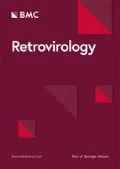Introduction
HTLV-1 is an endemic virus in the northeast of Brazil and is related to HAM/TSP in up to 5% of infected individuals. Despite this low prevalence it is known that a higher number of carriers presents with clinical and neurological symptoms that can be sensory, motor, urinary, inflammatory or autonomic.
Method
This is a cohort study with 440 HTLV-1 infected individuals in Salvador, Bahia. Symptoms were computed every year and incidence rates were calculated to each variable in data.
Results
Applying international criteria 163 individuals had definite, possible or probable HAM/TSP and 266 were asymptomatic. The last was selected for analysis. Follow-up of at least one year was archived in 64 to 75% of patients, varying according to the studied variable. The symptoms incidence rate was 20.6% for hand numbness, 18.6% for feet numbness, 12.9% for nocturia, 12.6% for urgency and 13.3% for dry mouth. In the physical exam the incidence was 22.7% for gingivitis, 7.6% for legs hyperreflexia, 5.2% for legs paraparesis and 3.6% for Babinski sign. In annual applied EDSS scale the incidence rate of worsening 1 point was 13.4%. Cox regression was done with EDSS curves and identified proviral load and female gender as significant risk factors (ORs 3.36 [1-11.66] and 1.80 [1.09-2.97] respectively). Six patients developed HAM/TSP during the cohort.
Conclusion
Developing of neurological symptoms or signs occurred in up to 30% of asymptomatic patients during 8 years follow-up. The estimated incidence was 12% for overactive bladder syndrome and 2.25% for definite HAM/TSP.
Author information
Authors and Affiliations
Corresponding author
Rights and permissions
This article is published under an open access license. Please check the 'Copyright Information' section either on this page or in the PDF for details of this license and what re-use is permitted. If your intended use exceeds what is permitted by the license or if you are unable to locate the licence and re-use information, please contact the Rights and Permissions team.
About this article
Cite this article
Tanajura, D., Castro, N., Oliveira, P. et al. Clinical manifestations in HTLV-1 infected individuals without HAM/TSP: Results of an 8 years cohort. Retrovirology 11 (Suppl 1), P3 (2014). https://doi.org/10.1186/1742-4690-11-S1-P3
Published:
DOI: https://doi.org/10.1186/1742-4690-11-S1-P3

